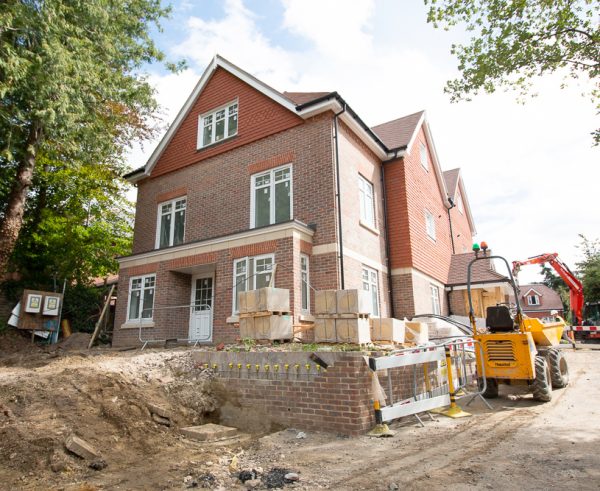Cautious Optimism for Construction Upturn
Industry matters • News • Regulation
The latest Office for National Statistics data confirms what businesses working in the construction sector already know from bitter experience. In the final quarter of 2023 construction output fell by 1.3% and new orders were down by 13.1%. Overall output data masks a significant fall in new-build output, which fell by 5% in the final quarter of last year. But if the industry analysts are to be believed, construction is set to bounce back from the end of 2024. Ground & Water reviews the evidence.
Economic factors
Currently the UK is in a shallow technical recession, with most economists predicting the economy to flatline for the rest of 2024. Globally the International Monetary Fund is predicting a broad reduction in inflation, thanks to stabilising fuel and commodity prices, with global economic growth of around 3% p.a. for the next two years. This forecast comes with the caveat, that it is subject to geo-political risks, stemming from conflicts in Eastern Europe and the Middle East, plus the risk of extreme weather shocks.
While inflation is gradually falling in the UK, providing some reduction in project costs, the Bank of England has indicated that interest rates are unlikely to reduce until the autumn: but the prospect of falling interest rates bringing a much-needed boost to the economy and individuals’ spending power, raises confidence that demand in the property market will return.
This has led the Building Cost Information Service (BCIS) to predict that while construction output will continue to fall in 2024 (by around 5.3%) the industry will see output grow by 3.8% next year thanks to new orders.
Political factors
Following its poor performance in the recent local elections, the Government has entrenched and indicates that it is unlikely to call a general election before the autumn. With a very real prospect of a change of governing party there will be a period of uncertainty within the investment landscape, with the potential for postponement or cancellation of strategic construction projects and the changes to policy and regulation that a change of leadership inevitably brings. Historically the latter impacts the private residential and commercial construction sectors.

Regulatory factors
The Home Builders’ Federation (HBF) published a freedom of information request response on 3rd May 2024, which revealed that since the planning reforms were introduced by the Conservative government in 2023, councils have spent over £50 million on legal advice aimed at overturning planning appeals, with the top 10 spenders being LPAs in the south and southeast of England. According to the HBF in total, more than 60 local authorities have now publicly withdrawn or delayed their local plan consultations, with many more looking to dramatically reduce their housing requirement or are simply biding their time and not progressing plans.
Adding more oil to this fire, a leader article published in the Times (Friday 3rd May 2024) asserts the prospect of a Labour government from the autumn, has seen councils racing to cut their house building targets by taking advantage of the Conservatives’ planning reforms, specifically where councils were allowed to avoid building on greenfield land even if it means they are unable to meet future housing requirements. According to research carried out by planning consultancy Lichfields – seen by the Times – 15 local authorities have already cut new-build targets for the next decade by 10% compared to previous plans. The article quotes a senior Labour Party source, who says a Labour government would reverse the current planning rules, but it would take a formal consultation and many months; and would be very hard to implement where local authorities had finalised their local plan.
Other factors
With a generally improving global and domestic economic forecast, analysts are predicting a fall in material costs, but this should be viewed against rising labour costs and the potential of increased skilled labour shortages if there is a sudden rise in demand.
If demand and construction output does see an upturn from the end of 2024, previous trends show that as the economy grows stronger, and demand for construction projects increases, tender prices inflate. Currently the UK TPI average is around 3%, with rates in London (2.6%) and the Southeast (2.4%) being the lowest nationally. Market analysts Currie Brown forecasts the TPI in these areas will increase to 4.5% and 4.3% respectively by the end of 2027. To mitigate the effects of tender-price-inflation, contractors and builders must carefully monitor market conditions and make adjustments to their pricing strategies accordingly. This may involve sourcing materials from different suppliers or negotiating better deals with existing ones.
The Ground & Water Verdict
While there is light at the end of the construction industry’s tunnel – great news and a welcome relief – the evidence we have reviewed, suggests there are some significant economic, geo-political, political and regulatory factors that could influence the timing of a major upturn.
A change of government in the autumn is not a silver bullet and it is likely to take many months until certainty and confidence is restored, and any negative legacies of the previous one are reversed, to the benefit of the construction industry. A significant upturn will also have its challenges, which businesses need to start planning for now.
But we think the green shoots should begin to appear in Q2 2025, with significant improvements following in 2026. Over the last two years our ability to help you find a more cost effective solution to build in these difficult times, has paid dividends for our clients. This is only part of what we offer, but for an upfront investment in quality ground and contaminated land investigations clients are routienly seeing significant savings down the line. You can see the eveidence of this when you visit out case study page HERE.
